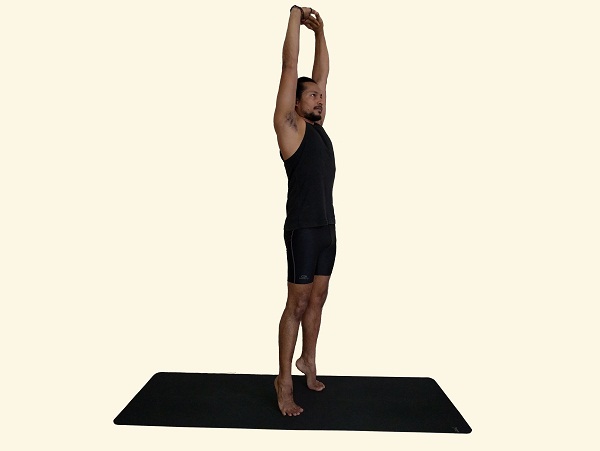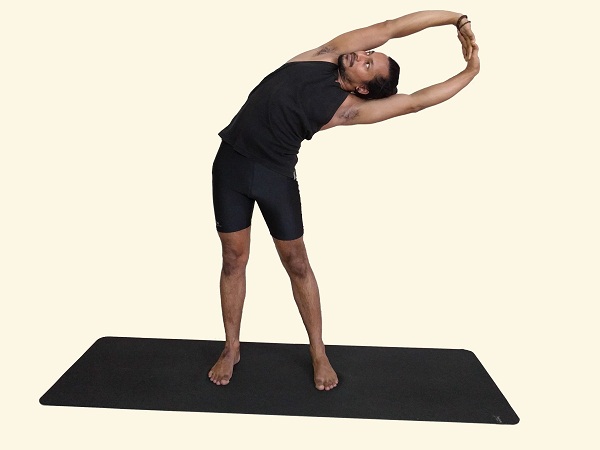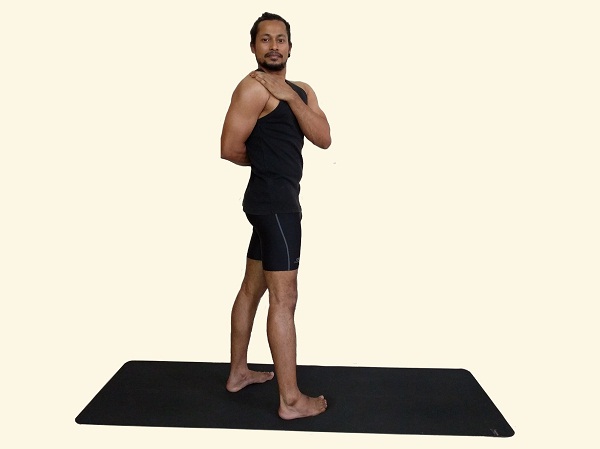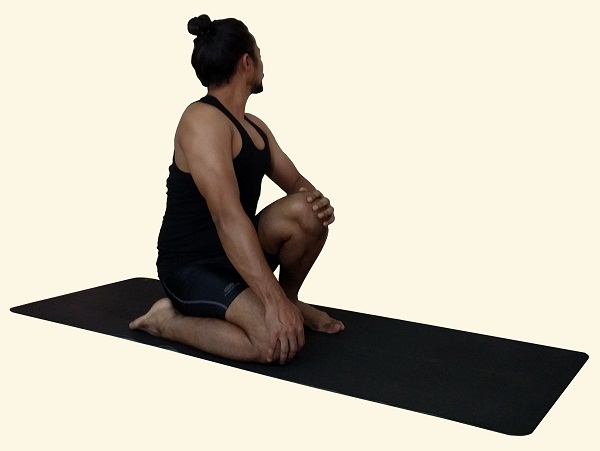‘Shank prakshalan’ can have amazing physical and emotional health benefits, but it’s not for the faint-hearted. The word ‘laghu’ means small, but this is a complete cleaning of the stomach and the intestines. (There is a more intense version but we won’t go into that here). The word ‘shankh’ means ‘conch’ and the word ‘prakshalana’ means ‘to wash completely’ (This process replicates the sea washing of a conch). It’s a process of cleansing the entire alimentary canal from mouth to anus.
This should only be done under the guidance of a trusted knowledgeable teacher. The information given here is to help deepen the understanding of the practice for those already familiar with it.
Why try it, and how does it work?
As you know the intestines are very long with many turns, so it’s easy for small pieces of food to get stuck or even dried on. Stuck for an extended time, it will start to rot and become toxic to your body. Laghu Shankh Prakshalan is done to remove this ‘ama'(toxins) from your intestines and for other benefits.
By using salt water having a concentration of salt more than that of your body, water will be ‘sucked’ out from the kidneys into the digestive tract to balance the level (by the process of osmosis). This flushes the system completely. The concentration of the salt is very important because if it is not enough, then there is a chance that salt will get absorbed, increasing your blood pressure, and/or leaving you with extra salt in the body (water retention).
You might feel a little weak initially so this should be done when you have a free day, you will regain strength after a few hours. Things that can help after the cleaning is done, having a probiotic drink to help the ‘good bacteria’ return as they might have been affected by the salt water. Stay hydrated and eat simple food throughout the day.
Before You Start
- Make sure you have access to toilet facilities
- We have mentioned the preparation of 2 liters (6-8 glasses) of water, some people can manage more than this, and some people less. It is quite difficult to drink but try to finish at least 1.5 liters for the process to work properly.
- Do the practice first thing in the morning BEFORE ANY FOOD OR DRINK (yes that includes you, coffee lovers)
- Wait at least 30 minutes after the practice before eating. You should eat something un-spiced and easy to digest. Traditionally this would be ‘khicdi’ made from basmati rice and mung dal with a little turmeric and some ghee. But anything like plain porridge would be fine (depending on what is available where you live).
Technique
- Prepare 2 liters of lukewarm salty water solution (2 teaspoon salt per liter).
- Quickly drink two glasses of water one after the other, and perform the below-mentioned dynamic asana (postures) 8 times each. (see photos below)
Talasana, Tiryak Talasana, Kati Chakrasana, Tiryak Bhujangasana, Udarakarshansana
- Quickly drink two more glasses of warm salty water, then 8 repetitions of the dynamic postures. Repeat the process, until the water is finished or until you cannot drink anymore.
- Try to relax as much as possible (the stomach may feel uncomfortable) and wait for the pressure to come then go to the toilet.
If you are quite blocked it might take a while for all the water to come out of the stomach. It can be slightly uncomfortable but try to be calm. Initially, the solid stool will come. then a mixture of water and stool, and then clear yellowish water. It may take 5+ trips to the bathroom to clear everything out.
- Once all of the water has come out, rest in shavasana for 10-20 minutes.
Postures
There are a number of valves in the alimentary canal between the stomach and the anus, which open and close to allow the controlled passage of food during the digestive process. These five asanas (postures) relax the muscles of these valves and allow the salt water to pass freely and quickly to the anus for discharge.
Talasana – Palm Tree Posture
- Stand with the feet hip-width apart, interlace the fingers
- Inhale, lift the arms up come onto the toes
- Exhale, bring your heels and arms down
- Repeat 8 times

Tiryak Talasana – Swaying Palm Tree Posture
- Stand with the feet hip-width apart, interlace the fingers bring them above the head
- Exhale, bring your torso and arms to the right side, look up
- Inhale, come up to the center
- Exhale, bring your torso and arms to the left side, look up
- Repeat each side 8 times

Kati Chakrasana – Waist Twisting Posture
- Stand with the feet hip-width apart
- Inhale arms straight out to the sides
- Exhale, twist bringing the left hand to the right shoulder, and the right hand behind the back
- Inhale, come to the center, arm out to the sides
- Exhale, twist bringing the right hand to the left shoulder, and the left hand behind the back
- Repeat each side 8 times

Tiryak Bhujangasana – Swaying Cobra Posture
- Lie on the stomach, with the feet hip-width apart, and place the hands on the ground beside your ribs
- Inhale, lift the chest up, keeping your elbows in and slightly bent
- Exhale, look over your right shoulder
- Inhale, look to the front
- Exhale, look over the left shoulder
- Repeat 8 times on each side

Udarakarshansana – Spinal Twisting Posture
- Squat down with your feet hip-width apart
- Shift your weight left to bring your right shin to the ground, and place your hands on your knees
- Use your hand to push the left knee across the body and twist the torso around and look over your left shoulder
- Come back to the squatting position
- Repeat with the left shin down.
- Twist on each side 8 times.

Benefits
- Relieves chronic constipation and gas
- Reduces acidity, indigestion, and other digestive upsets
- Can also be used to clean the kidneys and urinary system, helping to prevent urinary infections and the formation of kidney stones.
Contraindications
- Anyone suffering from stomach or duodenal ulcers,
- High blood pressure patients only do this under the supervision of an experienced guide. The salt concentration may need to be different or a different herb can be used to prevent the blood pressure from spiking up.
Did you know that modern science calls the gut the second brain? After reading the article on Yoga and the enteric nervous system you will be even clear why you should do this kriya.
There has been some research done on the effects of Shankh Prakshalan here are the links if you are interested in finding out more.
Other Cleansing Practices :